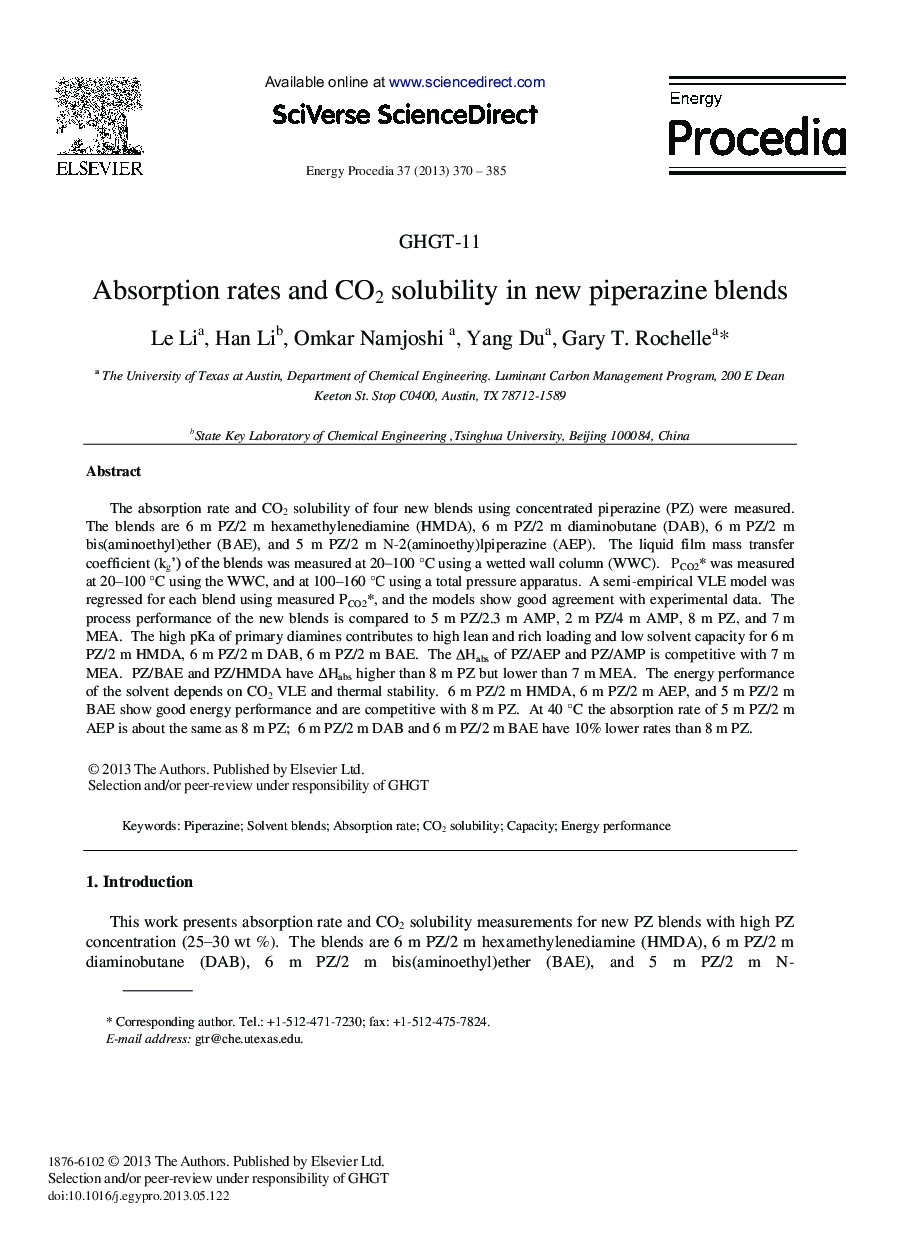| Article ID | Journal | Published Year | Pages | File Type |
|---|---|---|---|---|
| 1512835 | Energy Procedia | 2013 | 16 Pages |
The absorption rate and CO2 solubility of four new blends using concentrated piperazine (PZ) were measured. The blends are 6 m PZ/2 m hexamethylenediamine (HMDA), 6 m PZ/2 m diaminobutane (DAB), 6 m PZ/2 m bis(aminoethyl)ether (BAE), and 5 m PZ/2 m N-2(aminoethy)lpiperazine (AEP). The liquid film mass transfer coefficient (kg’) of the blends was measured at 20 100 °C using a wetted wall column (WWC). PCO2* was measured at 20–100 °C using the WWC, and at 100–160 °C using a total pressure apparatus. A semi-empirical VLE model was regressed for each blend using measured PCO2*, and the models show good agreement with experimental data. The process performance of the new blends is compared to 5 m PZ/2.3 m AMP, 2 m PZ/4 m AMP, 8 m PZ, and 7 m MEA. The high pKa of primary diamines contributes to high lean and rich loading and low solvent capacity for 6 m PZ/2 m HMDA, 6 m PZ/2 m DAB, 6 m PZ/2 m BAE. The Habs of PZ/AEP and PZ/AMP is competitive with 7 m MEA. PZ/BAE and PZ/HMDA have Habs higher than 8 m PZ but lower than 7 m MEA. The energy performance of the solvent depends on CO2 VLE and thermal stability. 6 m PZ/2 m HMDA, 6 m PZ/2 m AEP, and 5 m PZ/2 m BAE show good energy performance and are competitive with 8 m PZ. At 40 °C the absorption rate of 5 m PZ/2 m AEP is about the same as 8 m PZ; 6 m PZ/2 m DAB and 6 m PZ/2 m BAE have 10% lower rates than 8 m PZ.
